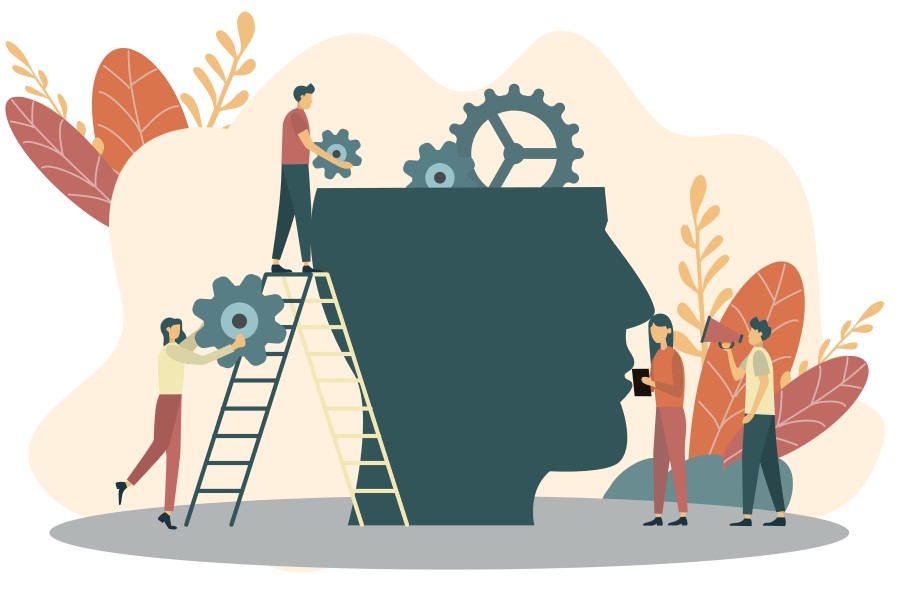Six steps to supporting mental health at work

1. Get the culture right
First and foremost, the workplace needs to be a comfortable place to ‘talk mental health’. Any specific steps taken to provide support will struggle to be effective unless there is an organisation-wide culture of openness and inclusivity. Everyone within the organisation has a part to play in this – and leaders need to set a good example by making it clear that the business takes mental health seriously and by being open about any experiences of their own which they may have been dealing with. Employees need to feel they can discuss issues of all kinds without fear of retribution or ridicule.
2. Appoint Mental Health Champions
Specially-trained staff can drive wellbeing initiatives. These could involve anything from lunchtime exercise classes – online or face-to-face – to exploring shared interest groups or volunteering opportunities. This approach can help prevent mental health decline on many levels. Feelings of positivity arise from social contact, particularly at a time when pandemic restrictions may have increased a sense of isolation. In the case of more active pursuits, there’s a close link between physical and mental health – an uplift in one can lead to similar improvement in the other. And when voluntary work is part of the mix, the feeling of doing good for someone else helps release endorphins, giving people a genuine boost to their mood and overall wellbeing.
To recruit your Champions, make use of employees who enjoy organising social events…every business has them. It’s important to appoint people from all levels – people might be more willing to open up to their peers than to the person they report to.
3. Train up a team of Mental Health First Aiders (MHFAs)
MHFAs can be trained to identify issues by looking at behavioural traits and patterns, such as unusual sickness absence or presenteeism. They can then offer appropriate support. Your workplace benefits provider should be able to help you with guidance on courses and workshops to do this.
Once your MHFAs are in place, let your workforce know who they are, specifically their names and locations.
4. Invest in training for leaders and line managers
Managers need to feel empowered to hold appropriate, supportive conversations with their team members about mental health. They should be particularly aware of signs that someone is finding it difficult to cope with growing levels of stress. It’s worth investing in some training to help line managers learn more about mental health in general, but also the specific challenges which may face staff at different life stages, and how these may lead to anxiety. This training need not be too time consuming and can often be delivered remotely, to fit in at convenient times alongside core duties.
5. Establish an Employee Assistance Programme (EAP)
Your business might consider running some wellbeing and mental health initiatives through an EAP, which can help support employees in all areas of their lives, including pressures at work, relationship breakdowns and money worries.
The service can include counselling options delivered through clinically validated smartphone apps. Mobile tools like these can help employees manage conditions such as anxiety, stress and depression. Given such easy access, it’s a good first line of defence.
Add to that a confidential, professional telephone counselling service to help employees proactively manage stress at work, as well as face-to-face intervention through the EAP when the going gets tough.
6. Make use of wellbeing services from your insurance provider
Resources from your provider can help you support a holistic approach to mental health. Supportive apps, helplines and online tools may be available to ease access to services directly related to mental health, such as counselling, as well as physical wellbeing support – nutrition services, for instance – which have a close relationship with mental health. Exercise-related staff benefits also fit in well with wellbeing initiatives, such as discounted gym memberships and cycle-to-work schemes.
All of this could be provided as part of a staff rewards or benefits scheme which can in itself improve morale and play a part in helping to preserve the mental wellbeing of your workforce.
This article is provided by Aviva.
In partnership with Aviva
Our purpose is to be with you today, for a better tomorrow.







